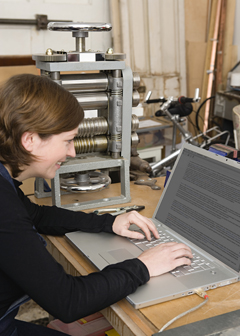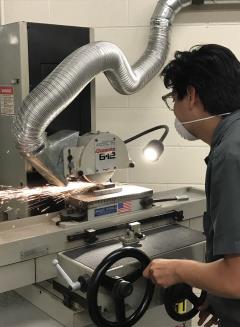Summary
Please enable javascript to play this video.
| Quick Facts: Machinists and Tool and Die Makers | |
|---|---|
|
$57,700 per year
$27.74 per hour |
|
| See How to Become One | |
| None | |
| Long-term on-the-job training | |
| 354,800 | |
| -2% (Decline) | |
| -5,900 | |
What Machinists and Tool and Die Makers Do
Machinists and tool and die makers set up and operate equipment to produce precision metal parts, instruments, and tools.
Work Environment
Machinists and tool and die makers work in machine shops and factories. Many work full time during regular business hours. However, working overtime, as well as nights and weekends, may be common.
How to Become a Machinist or Tool and Die Maker
Although machinists typically need a high school diploma to enter the occupation, tool and die makers also may need to complete postsecondary courses. Machinists and tool and die makers typically are trained on the job. Some learn through training or apprenticeship programs, vocational schools, or community and technical colleges.
Pay
The median annual wage for machinists was $56,150 in May 2024.
The median annual wage for tool and die makers was $63,180 in May 2024.
Job Outlook
Overall employment of machinists and tool and die makers is projected to decline 2 percent from 2024 to 2034.
Despite declining employment, about 34,200 openings for machinists and tool and die makers are projected each year, on average, over the decade. All of those openings are expected to result from the need to replace workers who transfer to other occupations or exit the labor force, such as to retire.
State & Area Data
Explore resources for employment and wages by state and area for machinists and tool and die makers.
Similar Occupations
Compare the job duties, education, job growth, and pay of machinists and tool and die makers with similar occupations.
More Information, Including Links to O*NET
Learn more about machinists and tool and die makers by visiting additional resources, including O*NET, a source on key characteristics of workers and occupations.
 United States Department of Labor
United States Department of Labor






